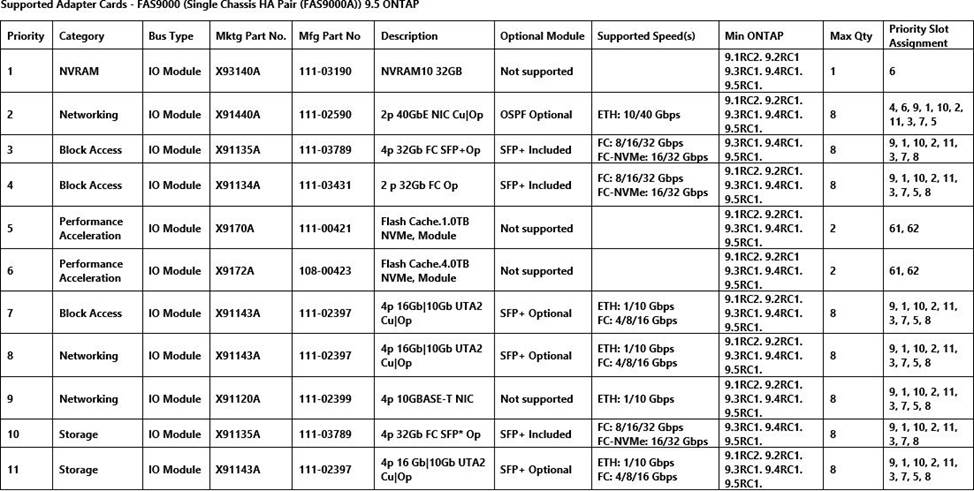Network Appliance NS0-526 NetApp Certified Implementation Engineer, Data Protection Online Training
Network Appliance NS0-526 Online Training
The questions for NS0-526 were last updated at Dec 19,2025.
- Exam Code: NS0-526
- Exam Name: NetApp Certified Implementation Engineer, Data Protection
- Certification Provider: Network Appliance
- Latest update: Dec 19,2025
You want to determine the amount of cold data that can be tiered from a FabricPool-enabled aggregate.
In this scenario, which feature satisfies this requirement?
- A . Inactive Data Reporting
- B . Information Lifecycle Management
- C . Object Store Profiler
- D . Auto Balance
A
Explanation:
First available in ONTAP 9.4, inactive data reporting (IDR) is an excellent tool for determining the amount of inactive (cold) data that can be tiered from an aggregate. IDR is enabled by default on FabricPool aggregates. More important, you can enable it on non-FabricPool aggregates by using the ONTAP CLI, to get visibility on how much you can gain by deploying FabricPool.
You are asked to protect your customer’s Exchange environment. You deploy SnapCenter 4.1 and the plug-in for Microsoft Exchange Server. While creating the backup policy, you select the Full and Log Backup from the list of supported backup types.
In this scenario, what would the Full and Log Backup type allow you to protect within Exchange?
- A . all databases but no transaction logs
- B . all databases and all transaction logs
- C . all uncommitted transaction logs and all of the databases
- D . all transaction logs but none of the databases
You are deploying a mission-critical business application for a healthcare customer that, according to government policies and regulations, requires zero data loss.
In this scenario, which NetApp solution enables you to set up data replication at a volume level to satisfy your business needs?
- A . MetroCluster
- B . SnapMirror-Synchronous
- C . SnapShot Copies
- D . SyncMirror
Your customer wants to implement SVM DR, but the customer is not certain whether the identity-preserve parameter should be enabled. The customer explains that the source and destination clusters are in different network subnets.
In this scenario, which SVM DR solution should the customer use?
- A . SVM DR using the identity-preserve parameter disabled and the default SnapMirror policy.
- B . SVM DR using the identity-preserve parameter enabled and then administratively take the data LIFs offline on the DR cluster.
- C . SVM DR with the identity-preserve parameter enabled and a SnapMirror policy with the discard-configs network parameter.
- D . SVM DR with the identity-preserve parameter enabled and the default SnapMirror policy.
Click the Exhibit button.

A customer needs to add an additional X91143A card into a FAS9000 to allow mirroring between the production system and the disaster recovery FAS9000 platform. Slots 1, 4, 6, 8, and 9 have cards in them.
Referring to the exhibit, in which slot should you install the card?
- A . 5
- B . 10
- C . 3
- D . 7
A customer has developed a new application that uses Oracle with an AFF system to help track all of their shipping trucks around the world. The customer wants to ensure that application-consistent backups are offloaded to the cloud.
In this scenario, which two solutions enable the customer to satisfy these requirements? (Choose two.)
- A . FabricPool
- B . Flash Pool
- C . SnapCenter
- D . FlexClone
A storage administrator is reviewing NAS volume space allocation and is concerned that the Snapshot copies that are recently created to protect the volumes are not storing the data from the volumes. One volume contains over 20 GB of data, although the latest SnapShot copy contains only 198 KB of data.
In this scenario, which statement is true?
- A . ONTAP references metadata when creating Snapshot copies instead of copying data blocks.
- B . The Snapshot policy is defined to create the Snapshot copy with only the most recent data changes.
- C . ONTAP uses data from all Snapshot copies when restoring of the volume is necessary.
- D . The Snapshot copies are created by using a background process that takes time to build.
You need to backup Exchange, MS SQL, and VMware virtual machines with application consistency.
Which tool accomplishes this task?
- A . OnCommand System Manager
- B . VMware vSphere Web client
- C . SnapCenter
- D . OnCommand Unified Manager
You are creating a SnapVault relationship and have concerns about the available capacity on the destination.
In this scenario, which three factors must you consider when you size the destination volume? (Choose three.)
- A . the autogrow settings on the source volume
- B . the size of the source volume
- C . the number of Snapshot copies to retain on the destination
- D . the rate of data increase on the source
- E . the number of Snapshot copies to retain on the source
A customer has ONTAP 9.5 clusters running at two nearby locations. The customer wants a zero RPO for one mission-critical volume.
In this scenario, which two NetApp solutions satisfy this requirement while using the existing ONTAP clusters? (Choose two.)
- A . SnapMirror Synchronous in StrictSync mode
- B . FabricPool
- C . SnapMirror Synchronous in Sync mode
- D . SyncMirror
Latest NS0-526 Dumps Valid Version with 212 Q&As
Latest And Valid Q&A | Instant Download | Once Fail, Full Refund

